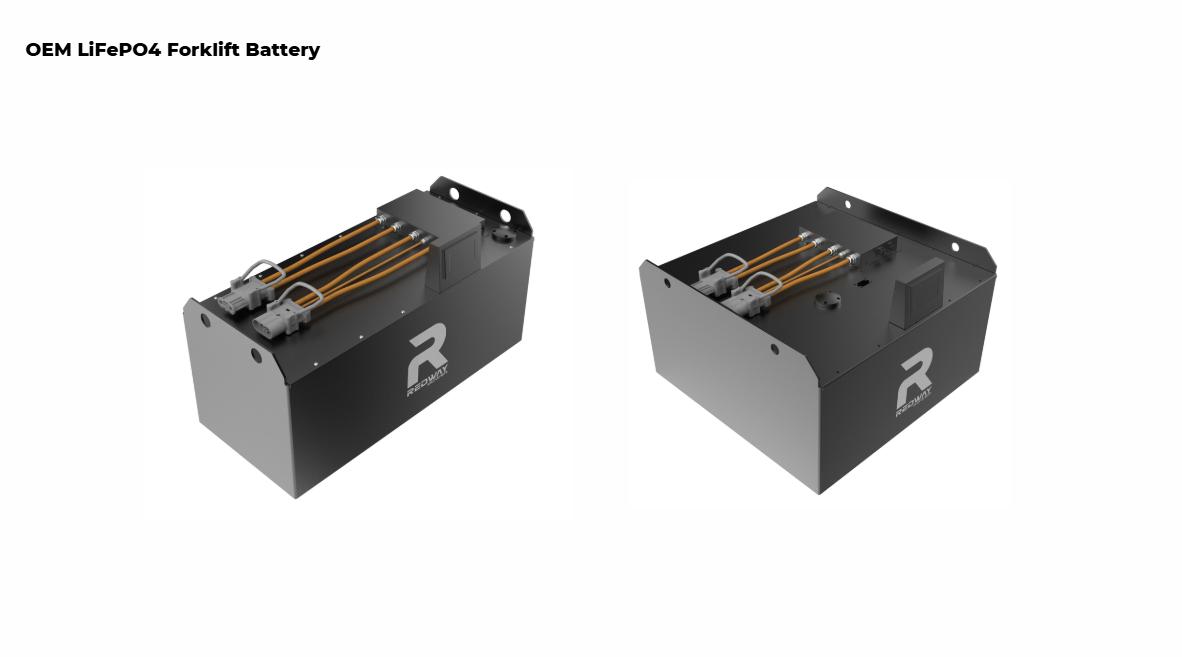What Are the Best Hyster Forklift Batteries for Sale?
Hyster forklift batteries are industrial-grade power sources designed for durability and performance. The best options include flooded lead-acid, AGM, and lithium-ion batteries, tailored to factors like workload, charging time, and budget. Top suppliers like Redway Power offer customized solutions with warranties and maintenance support. Always verify voltage, capacity, and compatibility with your Hyster model before purchasing.
How Do Hyster Forklift Batteries Compare to Other Brands?
Hyster forklift batteries are engineered specifically for Hyster equipment, ensuring seamless integration and optimal performance. Unlike generic brands, they prioritize thermal stability and vibration resistance, extending lifespan in demanding environments. Third-party alternatives like Trojan or EnerSys may offer competitive pricing but often lack proprietary Hyster safety protocols.
What Types of Hyster Forklift Batteries Are Available?
Three primary types dominate the market: flooded lead-acid (lowest upfront cost, high maintenance), AGM (spill-proof, faster charging), and lithium-ion (lightweight, 30% longer cycle life). Niche options include nickel-iron batteries for extreme temperatures and hydrogen fuel cells for zero-emission operations. Hyster-approved models feature reinforced plates to withstand rapid discharge-recharge cycles.
| Battery Type | Cycle Life | Charging Time | Ideal Use Case |
|---|---|---|---|
| Flooded Lead-Acid | 1,200 cycles | 8-10 hours | Single-shift operations |
| AGM | 1,500 cycles | 6-8 hours | Multi-shift warehouses |
| Lithium-Ion | 3,000+ cycles | 2-4 hours | High-throughput facilities |
Recent advancements in battery technology have introduced hybrid configurations combining lithium-ion efficiency with capacitor-based rapid charging. These systems can achieve 15-minute partial charges during operator breaks, effectively eliminating traditional battery swap requirements. For operations in sub-zero environments, gel-based variants maintain 85% capacity at -20°C compared to standard batteries’ 50% performance drop.
Why Choose Lithium-Ion Batteries for Hyster Forklifts?
Lithium-ion batteries reduce downtime with opportunity charging—partial charges without memory effect. They operate at 95% energy efficiency vs. 80% for lead-acid, cutting electricity costs by $1,200+ annually. Weight savings of 15-30% increase payload capacity. Despite higher upfront costs ($8k-$15k), ROI breakeven occurs within 2-3 years through reduced maintenance and replacement cycles.
The latest lithium models feature integrated battery management systems (BMS) that communicate directly with Hyster’s vehicle controllers. This synergy enables predictive maintenance alerts and load-based power allocation. For example, when lifting maximum loads, the BMS temporarily boosts voltage output while reducing travel speed energy consumption. Smart thermal management prevents overheating during rapid charging, extending cell life beyond manufacturer guarantees.
When Should You Replace a Hyster Forklift Battery?
Replace when capacity drops below 80% of original rating—typically after 1,500 cycles for lead-acid or 3,000+ for lithium. Warning signs include extended charging times, electrolyte discoloration, and voltage sag under load. Monthly hydrometer tests (for flooded batteries) and quarterly discharge tests help predict failure. Always recycle old batteries through EPA-certified programs.
Who Offers the Best Warranty on Hyster Forklift Batteries?
Redway Power leads with 5-year prorated warranties covering defects and premature capacity loss. Most OEMs provide 2-3 years but exclude sulfation damage. Third-party suppliers like BatteryJunction.com offer extended service plans—up to 7 years with weekly maintenance logs. Ensure warranties specify cycle count (e.g., 1,500 cycles at 80% DoD) rather than just time periods.
“Modern Hyster forklift batteries aren’t just energy sources—they’re productivity multipliers. We’re seeing 30% adoption growth in lithium-ion models, especially in cold storage where lead-acid efficiency plummets. Always cross-reference your forklift’s CAN bus data with the battery’s BMS for peak performance. And remember: proper watering systems pay for themselves in 18 months by preventing dry-out failures.”
— Redway Power Senior Engineer
Conclusion
Selecting the right Hyster forklift battery requires balancing upfront costs, operational demands, and sustainability goals. Lithium-ion dominates future-proof fleets, while flooded batteries remain viable for low-intensity operations. Partner with suppliers offering telematics integration to monitor battery health in real-time. Always prioritize UL 2580 certification and closed-loop recycling commitments.
FAQs
- Can I Use Non-Hyster Batteries in My Forklift?
- Yes, but with caveats. Third-party batteries must match voltage (±5%), capacity (±10%), and terminal orientation. However, mismatched BMS communication can trigger error codes. Hyster Genuine batteries include firmware updates for truck ECU compatibility—aftermarket options may require costly retrofits.
- How Long Do Hyster Batteries Last Per Charge?
- Runtime varies by model: 6-8 hours for 36V/675Ah lead-acid under 80% discharge. Lithium-ion equivalents last 9-11 hours due to deeper usable capacity. Actual performance depends on load weight, travel distance, and lift frequency. Use Hyster’s Battery Performance Calculator (v3.2) for fleet-specific estimates.
- Are Reconditioned Hyster Batteries Reliable?
- Quality reconditioned batteries restore 85-90% original capacity when rebuilt with new lead plates and separators. Look for sellers providing cell matching reports and minimum 1-year warranties. Avoid “refreshed” batteries—these only receive superficial recharging without component replacements.

